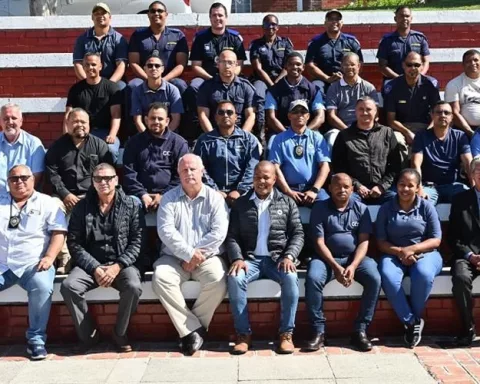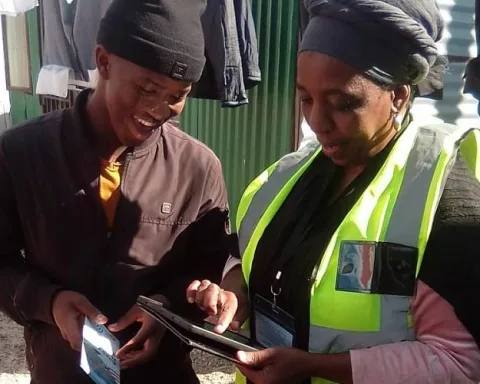President Cyril Ramaphosa’s visit to the Port of Richards Bay highlights the government’s focus on improving the nation’s logistical structure. The port is facing congestion issues due to various factors, such as inadequate rail mechanisms and a damaged conveyor belt. Transnet has proposed a recovery plan, which includes enhancing the Northern Corridor railway line and repairing the Richards Bay Dry Bulk Terminal conveyor belt. The government’s Freight Logistics Roadmap outlines a long-term strategy for reforming the freight logistics system, including open access to the freight rail network and increased private sector involvement. Private sector involvement is crucial in rehabilitating the nation’s logistics network to complete operational capacity.
President Cyril Ramaphosa’s visit to Richards Bay Port highlights the government’s focus on refurbishing the nation’s logistical structure. The port faces mounting congestion issues due to various factors, including failings in the rail mechanism and a fire that damaged the conveyor belts. Transnet’s recovery plan includes enhancing the Northern Corridor railway line and repairing the Richards Bay Dry Bulk Terminal conveyor belt, among other measures. The government’s Freight Logistics Roadmap outlines a long-term strategy for reforming the freight logistics system, including open access to the freight rail network and increased private sector involvement.
Section 1: The Significance of Ramaphosa’s Visit
On November 23, 2023, President Cyril Ramaphosa undertook a vital journey to the Port of Richards Bay. This port, renowned as South Africa’s leading coal harbor, is presently struggling with overcrowding due to escalating volumes of trucks. The presidential visit throws light on the government’s heightened emphasis on refurbishing the nation’s logistical structure, which is an essential component for employment generation and economic progression.
Richards Bay Port is a crucial node in the South African export system. Nevertheless, it has witnessed a mounting congestion issue emanating from an assortment of causes. Failings in the port’s rail mechanism due to historical underspending, inadequate locomotives, and continual cable theft are notable causes. The operational efficiency of the port also took a hit following a fire in October 2021 causing the conveyor belts considerable damage. These misfortunes are reflected in the extensive lines of trucks awaiting their turn at the port.
During his visit, President Ramaphosa was presented with a detailed briefing by the senior management of Transnet, the state-owned organization tasked with the management of the port. The briefing covered the ongoing difficulties as well as proposed interventions to better performance and lessen congestion.
Section 2: Revitalization Plans and Their Implementation
Transnet’s recuperation plan involves several steps to enhance the Northern Corridor railway line. This line functions as the main supply route for the port. As part of the plan, the aim is to boost the corridor with four supplementary locomotives and extend the train length from 40 to 50 wagons by the end of November 2023. Transnet is also hastening the repair work of the Richards Bay Dry Bulk Terminal conveyor belt, slated to become operational by December 2023. These strategies’ deployment is expected to enhance the movement of goods, thereby increasing throughput and easing congestion.
Alongside, the National Logistics Crisis Committee (NLCC), a government-driven initiative, is orchestrating timely actions to improve South Africa’s rail system and port performance. The NLCC has instituted five Corridor Recovery Teams (CRTs) focusing on the nation’s strategic corridors. These teams, composed of Transnet executives, rail and port users, and independent specialists, meet weekly to speed up the execution of performance-boosting measures.
The contribution of the private sector in this enormous task is praiseworthy. They have extended their support via the NLCC to improve system efficiency, safeguard rail infrastructure, and address critical equipment shortages. Their involvement is crucial in rehabilitating the nation’s logistics network to complete operational capacity.
Transnet, for its part, has proposed a recovery plan. This plan, spanning six to 18 months, emphasizes enhancing operational performance and stabilizing the company’s financial condition.
Beyond these immediate measures, the government has crafted the Freight Logistics Roadmap, outlining a long-term strategy for reforming the freight logistics system. It advocates for open access to the freight rail network, enabling private rail operators to use rail infrastructure and fostering increased private sector involvement in container terminals.
There has already been considerable progress on these proposals, including the choice of an international terminal operator to collaborate with Transnet at the Durban Pier 2 container terminal. Considering this terminal handles a significant chunk of South Africa’s port traffic, this collaboration marks a significant milestone.
In preparation for opening rail access in April 2024, an interim Infrastructure Manager has been appointed for the rail network. This appointment signals the imminent transformation of South Africa’s logistics structure.
To sum up, President Ramaphosa’s tour to the Port of Richards Bay confirms the South African government’s dedication to rejuvenating its logistics system. The strategies in place aim to elevate the country’s logistics performance to global standards, thereby uplifting the nation’s economic standing.
1. What was the purpose of President Cyril Ramaphosa’s visit to the Port of Richards Bay?
President Cyril Ramaphosa’s visit to the Port of Richards Bay highlights the government’s focus on improving the nation’s logistical structure.
2. Why is the Port of Richards Bay facing congestion issues?
The port is facing congestion issues due to various factors, such as inadequate rail mechanisms and a damaged conveyor belt.
3. What is Transnet’s proposed recovery plan for the Port of Richards Bay?
Transnet’s recovery plan includes enhancing the Northern Corridor railway line and repairing the Richards Bay Dry Bulk Terminal conveyor belt, among other measures.
4. What is the Freight Logistics Roadmap?
The government’s Freight Logistics Roadmap outlines a long-term strategy for reforming the freight logistics system, including open access to the freight rail network and increased private sector involvement.
5. How is the private sector involved in rehabilitating South Africa’s logistics network?
Private sector involvement is crucial in rehabilitating the nation’s logistics network to complete operational capacity. They have extended their support via the NLCC to improve system efficiency, safeguard rail infrastructure, and address critical equipment shortages.
6. What is the National Logistics Crisis Committee (NLCC)?
The National Logistics Crisis Committee (NLCC) is a government-driven initiative orchestrating timely actions to improve South Africa’s rail system and port performance. The NLCC has instituted five Corridor Recovery Teams (CRTs) focusing on the nation’s strategic corridors. These teams meet weekly to speed up the execution of performance-boosting measures.








